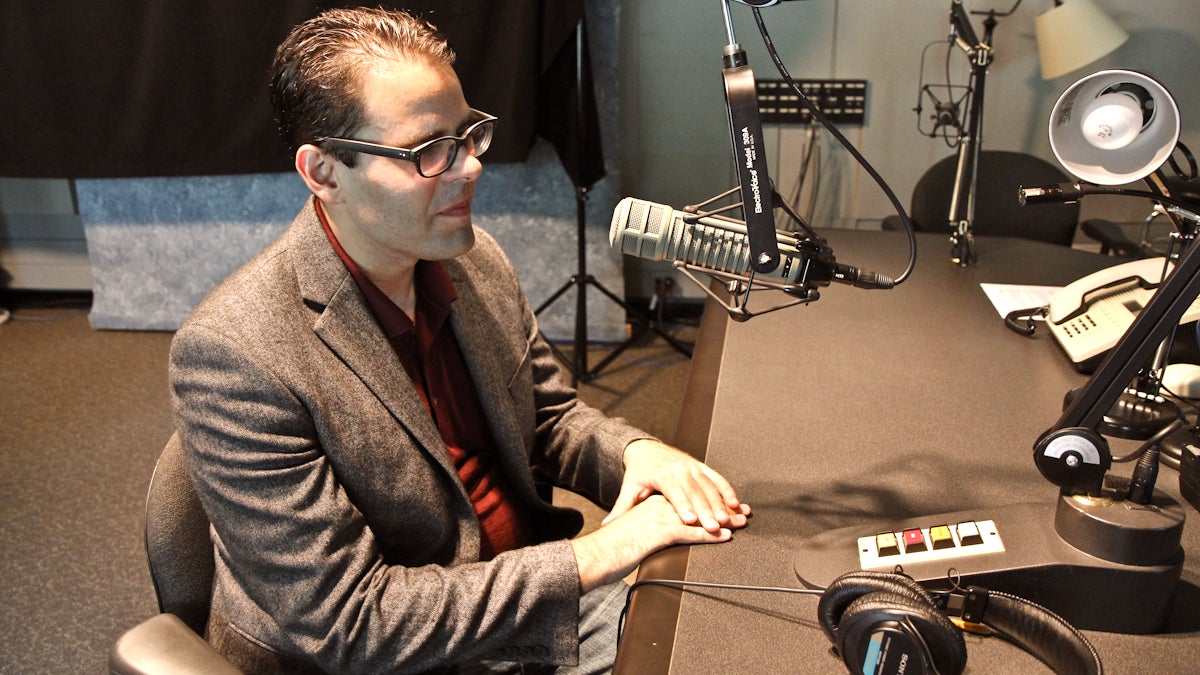Preserving memories 140 characters at a time after traumatic brain injury
Listen
Thomas Dixon at WHYY studios. (Kimberly Paynter
How one man uses technology as a tool to capture important memories.
Twenty-nine year old Thomas Dixon has had a cell phone since middle school and has grown up in a web-connected world of social media and hand-held technology. So when a brain injury caused a serious, ongoing memory deficit, it didn’t take long for him to figure out how to use technology to create his own digital memory.
In November 2010, the Philly native was hit by a car while on a run. He spent a week and a half in intensive care. While he was fortunate to have had no brain bleeding or swelling, he sustained the sort of damage often seen in Iraq war veterans from IEDs (improvised explosive devices).
“We realized pretty quickly that things were not as they should be,” Dixon said. He recovered after many months of rehabilitation, but his memory remained impaired.
“As of right now,” Dixon said, “I don’t remember what happened two days ago. I wouldn’t even accurately say that I remember what happened yesterday.”
The injuries caused ongoing episodic memory loss. Dixon is quick to explain that his type of memory loss is not the same as short-term memory loss. After four years, he finds it tedious to deflect comparisons of his condition to the types depicted in popular movies like Memento and 50 First Dates.
It’s not that the slate of memory and experience is completely wiped clean each day, he says. “Think about your life as episodes of a TV show.” Episodic memory is “your ability to remember what happened during each episode.”
When it first became apparent that the brain injury had affected his memory, the hospital staff gave him a paper and pen to keep track of his life.
“I’d wake up in the hospital bed, and there would be a note pad, and it would say things like ‘You were hit by a car. You’re going through recovery right now. Your family will visit you at 5 p.m.'”
Dixon says he relied on the notebook for about a month, but the idea of recording his memories that way quickly started to feel ridiculous.
“I noted to myself how absurd it was that we were walking around with cell phones, yet I was instructed to write things down.”
He “switched strategies” and decided to create a private Twitter account that only he could see and access in order to “Tweet my own memory.”
Although he had never used Twitter, he thought that 140 character Tweets were perfect for storing and accessing the kind of mundane but crucial information that gives context to daily life.
“Twitter works the way that episodic memory does,” Dixon says, keeping the most recent tweets readily accessible at the top of the list. Older tweets get pushed down the stack but are quickly accessible by a key word search.
Dixon says that he feels lucky to be living in a digital age where tools like Twitter and other technologies can help him live a fairly normal life. “If we didn’t have the current state of technology — let’s say we reversed everything by 20 years — I would be significantly impaired.”
Dixon has given presentations about traumatic brain injury at Philly Nerd Nite. He recently received a master’s degree in educational psychology from Temple University and has authored an article for The American Mensa Bulletin that will be published in July and is featured in a video presentation on “Twitter as Assistive Technology.”
WHYY is your source for fact-based, in-depth journalism and information. As a nonprofit organization, we rely on financial support from readers like you. Please give today.



